Best GraphQL Pagination Guides to Buy in November 2025
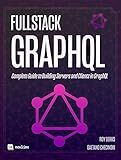
Fullstack GraphQL: Complete Guide to Building Servers and Clients in GraphQL


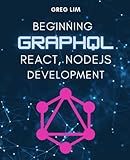
Beginning GraphQL with React, NodeJS and Apollo


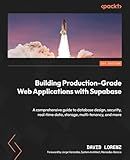
Building Production-Grade Web Applications with Supabase: A comprehensive guide to database design, security, real-time data, storage, multi-tenancy, and more



Fullstack React: The Complete Guide to ReactJS and Friends


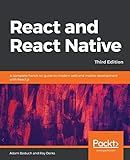
React and React Native: A complete hands-on guide to modern web and mobile development with React.js, 3rd Edition


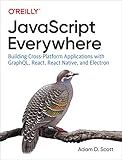
JavaScript Everywhere: Building Cross-Platform Applications with GraphQL, React, React Native, and Electron


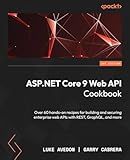
ASP.NET Core 9 Web API Cookbook: Over 60 hands-on recipes for building and securing enterprise web APIs with REST, GraphQL, and more


To paginate results in a GraphQL query, you can follow these steps:
- Define a pagination input type: Create an input type that includes parameters for pagination, such as first (to limit the number of results to fetch) and after (to specify the cursor after which results should be fetched).
- Modify the query field: Add the pagination input type as an argument to the query field where you want to apply pagination. For example, if you have a users query field, you can modify it like this:
users(first: Int, after: String): [User]
- Implement pagination in the resolver: In the resolver function for the query field, retrieve the pagination arguments and use them to slice the data accordingly. Apply the limit specified by first and skip results until the specified after cursor. Finally, return the paginated data to the client.
- Return pagination information: Along with the paginated data, you can also provide additional information about the pagination in the response. This can include details like the total number of results, the cursor for the next page, etc. For example, you can return an object with the paginated data and pagination information:
{ data: [User], pageInfo: { hasNextPage: Boolean, endCursor: String } }
- Handle pagination on the client-side: On the client-side, you can use the pagination information returned in the response to implement pagination controls. For example, you can use the hasNextPage flag to determine if there are more results to fetch and the endCursor to set the cursor for the next page.
By implementing these steps, you can enable pagination in your GraphQL queries and efficiently fetch and navigate through large result sets.
How can I implement cursor-based pagination in GraphQL?
To implement cursor-based pagination in GraphQL, follow these steps:
- Define a schema that includes a cursor field in the response type. This field should represent the current position in the paginated list.
type Query { posts(limit: Int, after: String): PostConnection! }
type PostConnection { edges: [PostEdge!]! pageInfo: PageInfo! }
type PostEdge { cursor: String! node: Post! }
type Post { id: ID! title: String! content: String! }
type PageInfo { hasPreviousPage: Boolean! hasNextPage: Boolean! }
- Implement the resolver function for the posts query. It should accept the limit and after arguments to determine the number of items to fetch and the starting position respectively.
const resolvers = { Query: { posts: (parent, { limit, after }) => { // Implement logic to fetch posts from a data source } } };
- Within the resolver function, use the limit and after arguments to fetch the appropriate number of items from a data source. The after argument can be used to determine the starting position by filtering the data using the cursor value.
const resolvers = { Query: { posts: (parent, { limit, after }) => { const posts = fetchPostsFromDataSource(); // Fetch all posts from the data source
// Apply filtering based on the cursor value
const startingIndex = posts.findIndex(post => post.cursor === after) + 1; // Find the index of the post with the provided cursor and increment it by one to get the starting position
const slicedPosts = posts.slice(startingIndex, startingIndex + limit); // Get the desired number of posts starting from the starting position
return {
edges: slicedPosts.map(post => ({
cursor: post.cursor,
node: post
})),
pageInfo: {
hasPreviousPage: startingIndex > 0, // Check if there are previous items
hasNextPage: startingIndex + limit < posts.length // Check if there are more items after the current ones
}
};
}
} };
- In the resolver function, return a PostConnection object that includes the paginated posts as edges and information about previous and next pages in the pageInfo. Each PostEdge object in the edges array should contain the post data and its corresponding cursor value.
- The client can now pass the limit and after arguments to the posts query to perform paginated queries. The response will include the paginated posts and information about the current page and available next/previous pages.
What is pagination in GraphQL?
Pagination in GraphQL refers to the process of retrieving a subset or "page" of results from a query. It allows clients to request a specific number of items at a time rather than retrieving all items at once. Pagination is commonly used when retrieving large datasets to improve performance and limit the amount of data transferred over the network.
GraphQL provides built-in support for pagination through the use of the first and last arguments in queries. These arguments define the number of items to be fetched from the server, and are typically combined with after, before, or cursor arguments to specify the starting point for retrieval. The server can then return a paginated result, including an array of items and cursor-based pagination information, such as the total count or the cursors of the next and previous pages.
Pagination in GraphQL offers flexibility, allowing clients to retrieve only the data they need and reducing unnecessary data transfer. It also provides a standardized approach to pagination across different queries and types in a GraphQL schema.
How do I limit the number of results in a GraphQL query?
In GraphQL, you can limit the number of results by using the "first" or "last" arguments in your query. These arguments are used to specify the maximum number of items you want to retrieve from a list.
Here is an example of how you can use these arguments:
query { users(first: 5) { id name } }
In this example, we are limiting the number of users returned by specifying the "first" argument as 5. This means that only the first 5 users will be returned.
Similarly, you can use the "last" argument to retrieve the last few items in a list:
query { users(last: 3) { id name } }
In this case, the query will return the last 3 users from the list.
Both "first" and "last" arguments can be used in combination with other arguments like filtering or sorting to retrieve a specific subset of data from a GraphQL endpoint.
